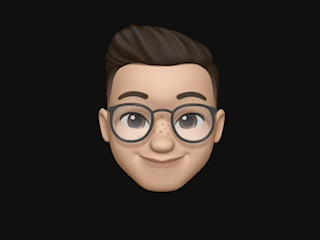Your resume is perfect. Your portfolio showcases ten years of wins. Yet, you’re stuck watching rejection emails pile up while less qualified candidates land interviews.
What’s happening? The job market has fundamentally shifted. Surprisingly, your credentials aren’t the problem anymore.
Bottom Line Up Front: Research shows that 86% of buyers are willing to pay more for better customer experiences, and 80% of customers say experience is just as important as products or services. Yet most professionals introduce themselves by listing credentials instead of communicating the customer value they create—and that’s costing them opportunities.
The Brutal Reality of Today’s Job Market
Hiring managers spend six seconds reviewing resumes. Six seconds to decide if you’re worth their time.
However, networking conversations give you even less. Research shows you have roughly three seconds before someone mentally checks out.
Think about your last networking event. Someone asked what you do. You launched into your background, listing companies and accomplishments.
Their eyes glazed over. They nodded politely. The conversation died.
Why Traditional Introductions Fail
Most professionals introduce themselves with job titles and credentials. “I’m a senior product designer with ten years of experience.”
Interestingly, that approach made sense in 2015. Today, however, it’s career suicide.
The Data Dump Problem
Your brain processes information differently than you think. Specifically, when someone lists achievements, listeners mentally disengage within seconds.
In contrast, benefit-driven statements trigger curiosity. Instead of tuning out, they make people lean in and want to hear more.
Compare these two introductions:
- “I’m an award-winning designer who worked with Fortune 500 companies for a decade.”
- “I help companies create experiences customers actually love while delivering measurable business outcomes.”
The first describes credentials. In contrast, the second describes impact on real people. Ultimately, one makes people yawn while the other makes them ask questions.
The Attention Deficit Reality
You’re competing with smartphones, emails, and wandering thoughts. In fact, studies suggest goldfish have longer attention spans than modern professionals.
That’s not an insult. Rather, it’s survival. After all, we’re bombarded with thousands of messages daily.
Your introduction needs to cut through that noise. Furthermore, it needs to do so immediately.
The Customer Experience Connection Nobody Talks About
Here’s what most career coaches miss. Surprisingly, your introduction isn’t just about you.
Instead, it’s your listener’s first experience with your professional brand. As a result, that makes it a CX problem, not a marketing problem.
Research shows that 80% of customers say experience is just as important as products or services, yet most professionals fail to apply CX principles to their own introductions.
You’re Designing an Experience
Every interaction creates an experience. Essentially, when someone asks what you do, you’re designing their journey from curiosity to engagement.
Think about bad customer experiences. Too much information. Unclear value propositions. Additionally, friction at every touchpoint.
Now think about your last introduction. Did you overwhelm with details? Did you fail to articulate clear value? Moreover, did you create friction by making them work to understand you?
Chances are, you’re probably designing terrible experiences without realizing it.
Empathy Starts With Listening
Good designers understand user needs before proposing solutions. Similarly, your introduction should work the same way.
What does your listener need in that moment? Certainly not your entire career history. Nor do they need every skill you’ve mastered.
Instead, they need to understand what you do and whether it’s relevant to them. Fast.
Consequently, an empathetic introduction respects their time and cognitive load. It gives them exactly what they need to decide whether to engage further.
The Science Behind Powerful Introductions
Effective introductions follow psychological principles. They trigger specific brain responses that make people want to engage.
Pattern Interruption Works
Your brain loves patterns. Interestingly, when something breaks the expected pattern, you pay attention.
Traditional introductions follow predictable formats. Name, title, experience. As a result, your brain anticipates the structure and tunes out.
Consequently, outcome-focused introductions disrupt expectations. Furthermore, they force active listening because they speak to results, not resume bullets.
Problem-Solution Triggers Engagement
Humans are wired to solve problems. Specifically, when you present a problem your listener faces, their brain activates.
Therefore, framing your value as a customer-focused solution creates instant relevance. In essence, you’re no longer just another job seeker.
Rather, you become someone who understands their customers’ pain points and knows how to fix them.
Five Frameworks That Actually Work
Let me challenge the conventional wisdom here. Typically, most career coaches recommend one standard introduction format.
However, that’s limiting. In reality, different situations require different approaches, just like different customer segments need different experiences.
Framework 1: The Direct Benefit
Formula: “I help [target audience] achieve [desired outcome].”
Example: “I help tech companies turn frustrated users into loyal customers through research-driven, empathetic design.”
Notably, this works best in professional networking situations. It’s clear, direct, and immediately communicates customer impact.
Framework 2: The Breakthrough Promise
Formula: “I help [target audience] achieve [benefit] without [common problem].”
Example: “I help enterprise companies create intuitive customer experiences without sacrificing business goals or technical constraints.”
Importantly, the “without” clause separates you from competitors. Additionally, it addresses the objection before it’s raised, showing you understand the real challenges.
Framework 3: The Passion Statement
Formula: “I’m passionate about [what you value] to achieve [audience outcome].”
Example: “I’m passionate about human-centered design, creating experiences that solve real customer problems and deliver measurable impact.”
Typically, use this when changing careers or industries. Ultimately, it shows motivation beyond credentials and demonstrates genuine care for end users.
Framework 4: The Strength Declaration
Formula: “I’m known for [your strength] to achieve [audience outcome].”
Example: “I’m known for transforming complex customer pain points into elegant solutions that improve satisfaction and drive business results.”
Notably, this approach works when you lack traditional qualifications. Instead, it focuses on the customer outcomes you create rather than what you’ve done.
Framework 5: The Mission Statement
Formula: “I’m on a mission to [achieve] [audience value].”
Example: “I’m on a mission to bridge the gap between what customers need and what businesses build through outcome-focused design.”
Specifically, mission statements work best in purpose-driven organizations. Furthermore, they demonstrate values alignment and commitment to customer wellbeing before discussing skills.
Why This Matters More Than Ever in 2025
The job market became exponentially more competitive. Specifically, AI tools help companies screen thousands of applications instantly.
Additionally, remote work expanded the talent pool globally. As a result, you’re competing with candidates from everywhere.
The Networking Imperative
Research consistently shows 70-85% of jobs are filled through networking. Not job boards. Not applications.
Personal connections matter more than perfect resumes. However, networking requires effective communication that demonstrates empathy and understanding.
Your introduction creates the first impression. It determines whether someone remembers you or forgets you immediately.
Consider this: while only 6% of job applications include referrals, these applications account for 37% of all hires. The difference? Those candidates knew how to communicate their value in a way that made people want to advocate for them.
The Personal Brand Reality
Every interaction shapes your professional brand. Specifically, LinkedIn messages, coffee meetings, and conference conversations all contribute.
Moreover, your introduction becomes your brand shorthand. Essentially, it’s how people remember and refer you.
“You should meet Sarah. She creates customer experiences that actually work.” That’s memorable.
In contrast, “You should meet Sarah. She’s worked in design for years.” That’s forgettable.
The Real Reason You’re Getting Rejected
Here’s the uncomfortable truth most career coaches won’t tell you. Surprisingly, your skills aren’t the problem.
Rather, your inability to communicate customer-focused value is killing opportunities. In fact, you’re letting qualified candidates with better storytelling win jobs you could do better.
The Inner Critic Trap
When rejection emails arrive, your inner critic whispers. “You’re not good enough. Not smart enough. They saw through you.”
However, that voice lies. In reality, the issue isn’t your capabilities.
Instead, the problem is how you’re positioning those capabilities. Essentially, you’re describing yourself when you should be describing the experiences you create for customers.
The Impostor Syndrome Connection
Feeling like an impostor? Interestingly, that’s partly because you’re framing yourself wrong.
When you introduce yourself with credentials, you invite comparison. Inevitably, someone always has more experience, better companies, or bigger achievements.
Studies show that 65% of professionals suffer from impostor syndrome, with rates especially high among high-achieving women and those early in their careers. Notably, the constant self-doubt stems from comparing credentials rather than communicating value.
Conversely, introducing yourself through customer outcomes shifts the conversation. Essentially, you’re not competing on credentials anymore.
Instead, you’re offering to improve people’s lives through better experiences. That’s much harder to compare.
How to Craft Your Perfect Introduction
Creating an effective introduction requires introspection. Specifically, you need clarity on the customer impact you create.
Step 1: Identify Your Target Audience
Who needs your skills most? Be specific. Obviously, “Companies” is too broad.
In contrast, “Enterprise SaaS companies struggling with customer churn due to poor UX” is targeted. Furthermore, it immediately filters relevant listeners and shows you understand customer pain.
Step 2: Define the Customer Transformation
What changes for end users after you do your work? Importantly, not what you do, but how customers feel differently.
Think customer outcomes, not design activities. For example, “Users complete tasks 40% faster and report higher satisfaction” beats “improved the interface design.”
Step 3: Address the Customer Pain Point
What makes achieving great customer experiences difficult? Specifically, what’s the common blocker organizations face?
That becomes your “without” clause. Ultimately, it demonstrates understanding of real CX challenges, not just surface-level problems.
Step 4: Test Multiple Versions
Don’t settle on one introduction. Instead, create three to five versions using different frameworks.
Test them in real conversations. Specifically, notice which ones make people lean in and ask about your process.
Refine based on actual responses, not what sounds good in your head. Essentially, just like user testing.
Common Mistakes to Avoid
Even armed with frameworks, people stumble. Here’s what derails most introductions.
Being Too Clever
Wordplay and metaphors confuse more than clarify. Your introduction should be understood immediately.
If someone needs to think about what you said, you lost them. Clarity always beats creativity, just like in UX design.
Listing Multiple Services
Trying to appeal to everyone appeals to no one. Pick one primary customer outcome.
You can expand later. The introduction just needs to open the door to a deeper conversation.
Ignoring the Emotional Impact
Facts tell, stories sell. Data matters, but people remember how you make them feel.
“I reduce customer frustration” hits differently than “I improve task completion rates.” Both are true. One connects emotionally.
Making It Too Long
Twenty words isn’t arbitrary. It’s the maximum attention span for initial introductions.
Every word beyond that decreases retention. Edit ruthlessly. Good CX eliminates unnecessary friction.
Real-World Application Strategies
Knowing frameworks doesn’t guarantee success. You need to deploy them strategically, adapting to each audience’s needs.
Networking Events
Lead with your direct benefit framework. These environments favor clarity over nuance.
People are meeting dozens of professionals. Make it easy for them to categorize and remember the customer impact you create.
Interview Settings
Use the breakthrough promise framework. It addresses concerns before they arise.
Hiring managers worry about risks. Your introduction should demonstrate you understand customer needs and business constraints simultaneously.
LinkedIn Summary
Open with your mission or passion statement. LinkedIn readers want to understand your “why” and your commitment to users.
Follow with specific customer outcomes you’ve delivered. The platform allows more depth than verbal introductions.
Email Introductions
Adapt your introduction to the recipient’s context. Research their customer challenges first.
Then craft your introduction to specifically address how you’ve solved similar CX problems. Generic introductions get deleted.
The 30-Day Implementation Challenge
Theory means nothing without practice. Here’s how to make this stick.
Week 1: Creation
Draft five different introductions using the frameworks. Write them down physically.
Read them aloud. Awkward phrasing reveals itself when spoken, just like usability testing reveals design flaws.
Week 2: Testing
Use a different introduction in every professional conversation. Note reactions.
Which versions prompted “tell me more”? Which led to glazed eyes? Track it like you’d track user engagement metrics.
Week 3: Refinement
Take your top two performers and create variations. Test subtle word changes.
“Create experiences” versus “improve experiences.” “Customers” versus “users.” Small shifts create different emotional responses.
Week 4: Integration
Update all your professional materials with your refined introduction. LinkedIn, resume summary, email signature.
Consistency reinforces your message. People need to hear it multiple times to remember you care about customer outcomes.
The Uncomfortable Truth About Job Searching
Most job search advice focuses on things that barely matter. Perfect resume formatting. Cover letter templates.
Those things don’t hurt. They just don’t help much either.
The real differentiator is how you communicate customer-focused value in the moment. When someone gives you three seconds of attention, can you show them you understand what matters?
For more insights on standing out in competitive markets, check out my article on how companies like Spotify are transforming customer experiences through strategic innovation.
Skills Don’t Speak for Themselves
You might have the best portfolio in your field. That’s irrelevant if no one asks to see it.
Your introduction determines whether conversations happen. Everything else comes after.
Think about it. How many talented professionals do you know who struggle to find opportunities?
Their skills aren’t lacking. They’re failing to communicate the customer impact they create.
Why This Feels Uncomfortable
Talking about yourself strategically feels manipulative. Like you’re reducing your professional identity to a marketing slogan.
That discomfort is normal. It’s also misplaced.
You’re not manipulating anyone. You’re designing a better experience for your listener by communicating clearly and concisely.
Moreover, unclear communication wastes everyone’s time. Rambling introductions force listeners to decode your value themselves.
Most won’t bother. They’ll just move on to someone who made their customer impact immediately clear.
The Empathy Factor
Great customer experience requires empathy. Understanding what users feel, need, and struggle with.
Your introduction should demonstrate that same empathy. Not for abstract customers, but for the person standing in front of you right now.
What do they need to hear? What will resonate with their challenges? How can you make this interaction valuable for them?
That’s the mindset shift. From “what do I want to say” to “what does this person need to understand about the value I create for customers.”
Studies show that 96% of customers say customer service is important in their choice of brand loyalty—and the same principle applies to how you present yourself. Are you making people want to learn more, or are you creating friction?
At the end of the day….
Your resume matters. Your portfolio matters. Your skills absolutely matter.
However, none of that matters if you can’t communicate the customer experiences you create. Your introduction is the key.
Twenty words can change everything. They can transform you from forgettable to memorable.
From overlooked to in-demand. From “not quite right” to “exactly who understands our customers.”
The question isn’t whether you’re qualified. You probably are.
The question is whether you can communicate the customer impact you create in the three seconds someone gives you.
Start crafting your introduction today. Test it tomorrow. Refine it next week.
Because somewhere right now, someone less qualified than you is landing your dream job. They just articulated their customer-focused value better than you did.
Don’t let that happen again.
Ready to transform your professional presence? Explore more insights on creating customer-focused experiences and standing out in competitive markets:






